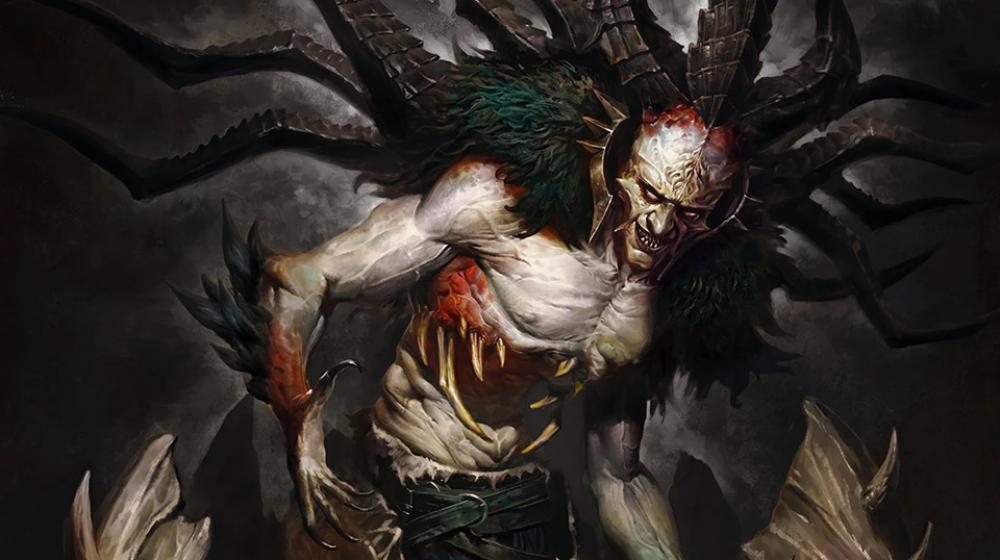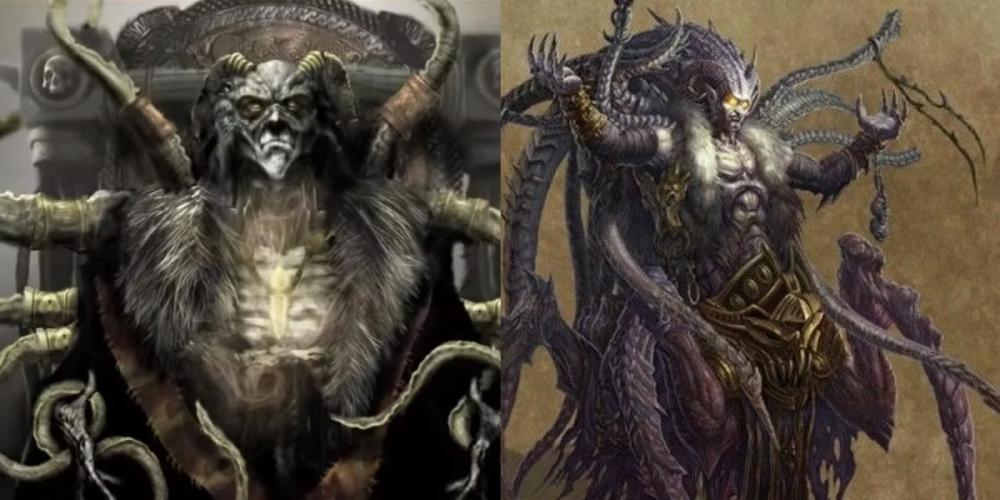Physical Address
304 North Cardinal St.
Dorchester Center, MA 02124
Physical Address
304 North Cardinal St.
Dorchester Center, MA 02124

Hey there gamers, ready to dive into the depths of hell and learn about one of the most destructive forces in the Diablo series? We’re talking about none other than Baal, the Prime Evil who oozes chaos and leaves destruction in his wake. In this article, we’re going to give you the inside scoop on this powerful foe, from his backstory to his epic battles. So grab your weapons and get ready to fight, because you won’t want to miss what we have in store. Get ready to unleash hell on Baal!

Baal is one of the three Prime Evils in the Diablo game series. Baal is known for being brash and reckless, and he spawned from one of the seven heads of the great dragon Tathamet.
Baal’s domain in the Burning Hells was the Realm of Destruction. Baal worked with his brothers Diablo and Mephisto in the Fifth Battle of the Diamond Gates, but their discord allowed the forces of Heaven to drive them back.
Baal and his brothers founded the Triune, a seemingly benevolent religion that was actually a front for their true motives. Baal’s alter ego in the Triune was Bala, the Spirit of Creation, represented by a leaf in Triune iconography. The Triune’s efforts to ensnare humanity were hindered by the rogue angel Inarius, leading to the Sin War. Baal and his brothers were banished into Sanctuary in what became known as the Dark Exile. The Horadrim captured Baal and entombed him in Tal Rasha, but centuries later, Diablo freed Baal, who then corrupted the Worldstone to devastating effect for the barbarians who lived near Mount Arreat. The heroes killed Baal shortly afterward.

Baal is a being who revels in absolute annihilation and chaos. He is the most reckless and brash of the Prime Evils, and his desire is for the Eternal Conflict to continue forever. Baal’s vision for Sanctuary is a wasteland stained with blood, where all order has been undone and destroyed. His minions are bred for strength, agility, and cunning, and they seek the undoing of Creation.
Despite appearing to be the most base and easiest to comprehend of the Prime Evils, Baal is just as cunning and nefarious as his siblings. He is capable of using strategy and deception to further his goals, and is not above sadistic acts of murder and feasting on human flesh and blood. He is willing to incite and inspire destruction and chaos wherever he goes, and is not concerned with the consequences or aftermath of his actions.
Baal is an enemy to all who value order and creation, and seeks to bring about their destruction. He is a master of war and constantly trains his lieutenants in the art of combat. His demons are often intangible on the mortal plane, making them difficult to defeat. Baal’s ultimate goal is to bring about the end of all things, and he will stop at nothing to achieve it.
It is also worth considering:

Baal is a prominent character in the Diablo series, serving as the final boss in Diablo 2: Lord of Destruction, the expansion pack for Diablo 2. He is one of the three Prime Evils, along with his brothers Diablo and Mephisto, who serve as the main antagonists throughout the Diablo series. In Diablo 2, Baal is summoned by the player character to the mortal realm, but he quickly turns on them and seeks to destroy humanity.
Baal’s appearance is almost spider-like, with four insectoid legs and festering appendages that he can summon to impede the player’s path. He possesses a variety of deadly special attacks, including Hoarfrost, Incineration Nova, Mana Rift, Destructive Strike, Teleport, and Vile Effigy. Baal is also capable of some form of remote viewing or extrasensory perception, which he uses to manipulate his surroundings and attack players from afar.
In Diablo Immortal, Baal appears as a boss in the “Destruction’s End” dungeon, and his abilities are almost identical to the ones in Diablo 2. The player is aided by Tal Rasha and Zoltun Kulle, but neither have much influence over the battle. Baal is fought twice during the dungeon, with the second fight being harder. However, the player has some recourse from Tal Rasha, who can generate a shield to protect them from Baal’s fireballs.
Baal’s manuscripts can also be found in the Battlefields of Eternity in Act V of Diablo 3, and the Fragment of Destruction is named in reference to him. In Diablo Chess, he represents Hell’s bishop piece. Overall, Baal is an important character in the Diablo series, known for his formidable abilities and role as one of the Prime Evils seeking to destroy humanity.

As mentioned in the previous passage, Baal was defeated by the heroes in Diablo 2, which would make it difficult for him to return as a villain in Diablo 4. While Blizzard has not confirmed whether or not Baal will make an appearance in Diablo 4, it is unlikely that he will return as the main antagonist due to his defeat in the previous game. Blizzard has a history of introducing new villains in their sequels, such as Diablo 3’s Diablo, who was not the main villain in the previous game.
Additionally, Blizzard has stated that Diablo 4 will focus on Lilith, the daughter of Mephisto, as the main antagonist. The developers have stated that they want to explore the lore surrounding Lilith, who has only been mentioned in previous games, and give her a larger role in the Diablo universe. This focus on Lilith would make it less likely for Baal to return as the main villain, as it would take away from the development of Lilith’s character and story.
However, it is important to note that plans can change during the development process, and Blizzard may decide to bring Baal back in some capacity. They may choose to have him appear in a side quest or as a boss fight, or they may even decide to bring him back as a major villain in a future expansion. Ultimately, only time will tell whether or not Baal will make a return to the Diablo franchise.

Did you know that Baal, the Lord of Destruction in Diablo, is considered one of the Great Evils and one of the heads of the dragon Tathamet? He presides over the Realm of Destruction in the Burning Hells, where he relishes in destruction and can never get exhausted from the endless war between the Burning Hells and the High Heavens. Also, Baal’s Soulstone shattered into pieces, which meant that he would once again walk Sanctuary. Furthermore, in the battle of souls, the Horadrim found a way to contain Baal’s power at the cost of their own, by fusing his shard with the human body of Tal Rasha. Moreover, Baal has come to Sanctuary far more times than players think. If you play Diablo Immortal, you can witness Baal’s worst encounter against the Horadrim in the Timewalking Dungeon “Destruction’s End.” In addition, Baal’s name comes from the term “Ba’al,” meaning “Master” or “Lord” in Sumerian, and it is considered a fitting title for a Prime Evil like Baal.
Baal is a powerful and destructive Great Evil, one of the three Prime Evils in the Diablo game series. He has a brash and sadistic personality and enjoys destruction, making him a formidable opponent. Baal was defeated by the heroes in Diablo 2, but there are many lesser-known facts about his character and his influence on the lore of the series. As for the question of whether Baal will return in Diablo 4, it remains uncertain. While it has not been confirmed by Blizzard, based on Baal’s history in the series, it seems unlikely that he will make a return. However, gamers can still look forward to experiencing his power in past games and reliving his defeat in various dungeon experiences.